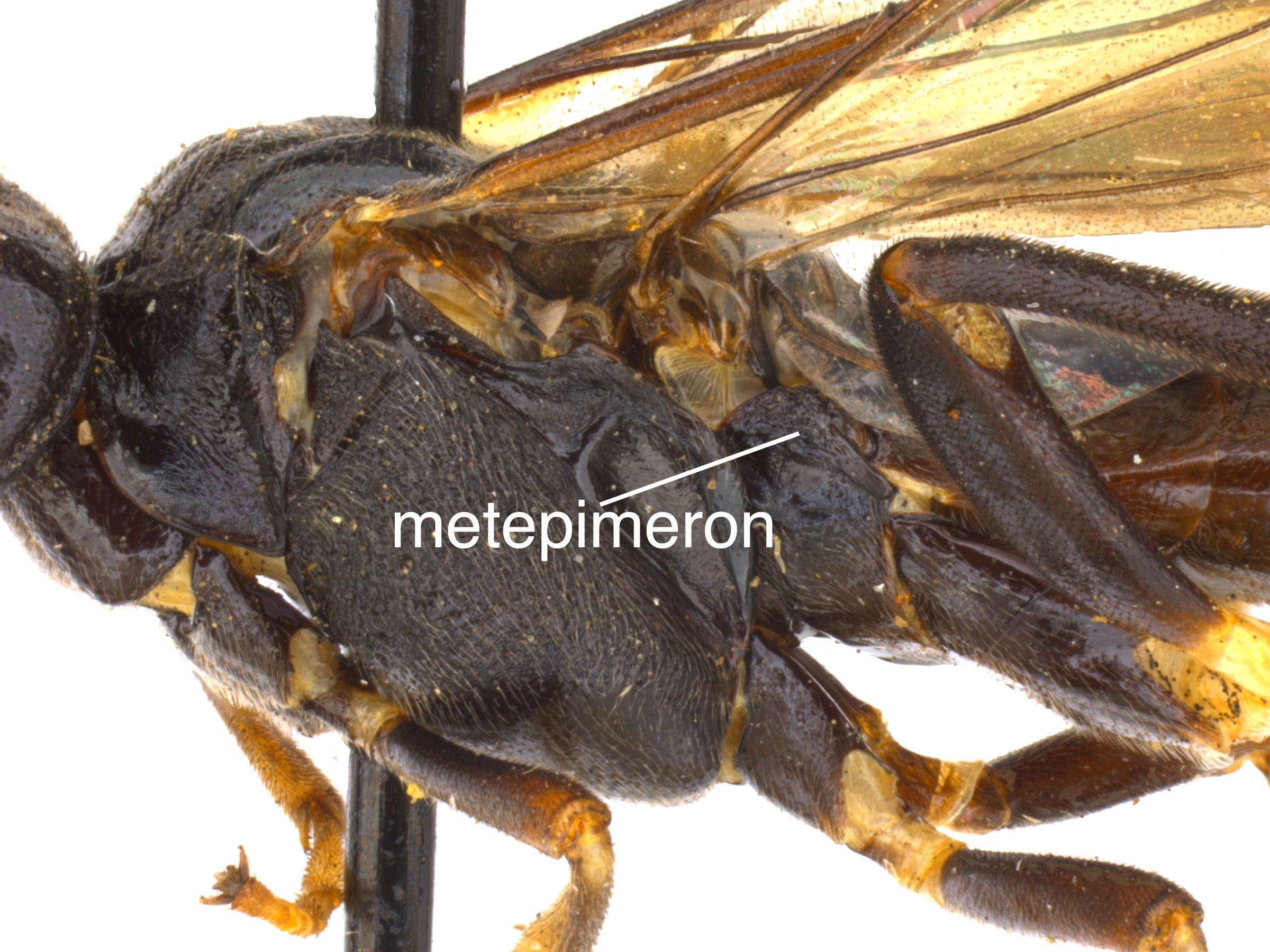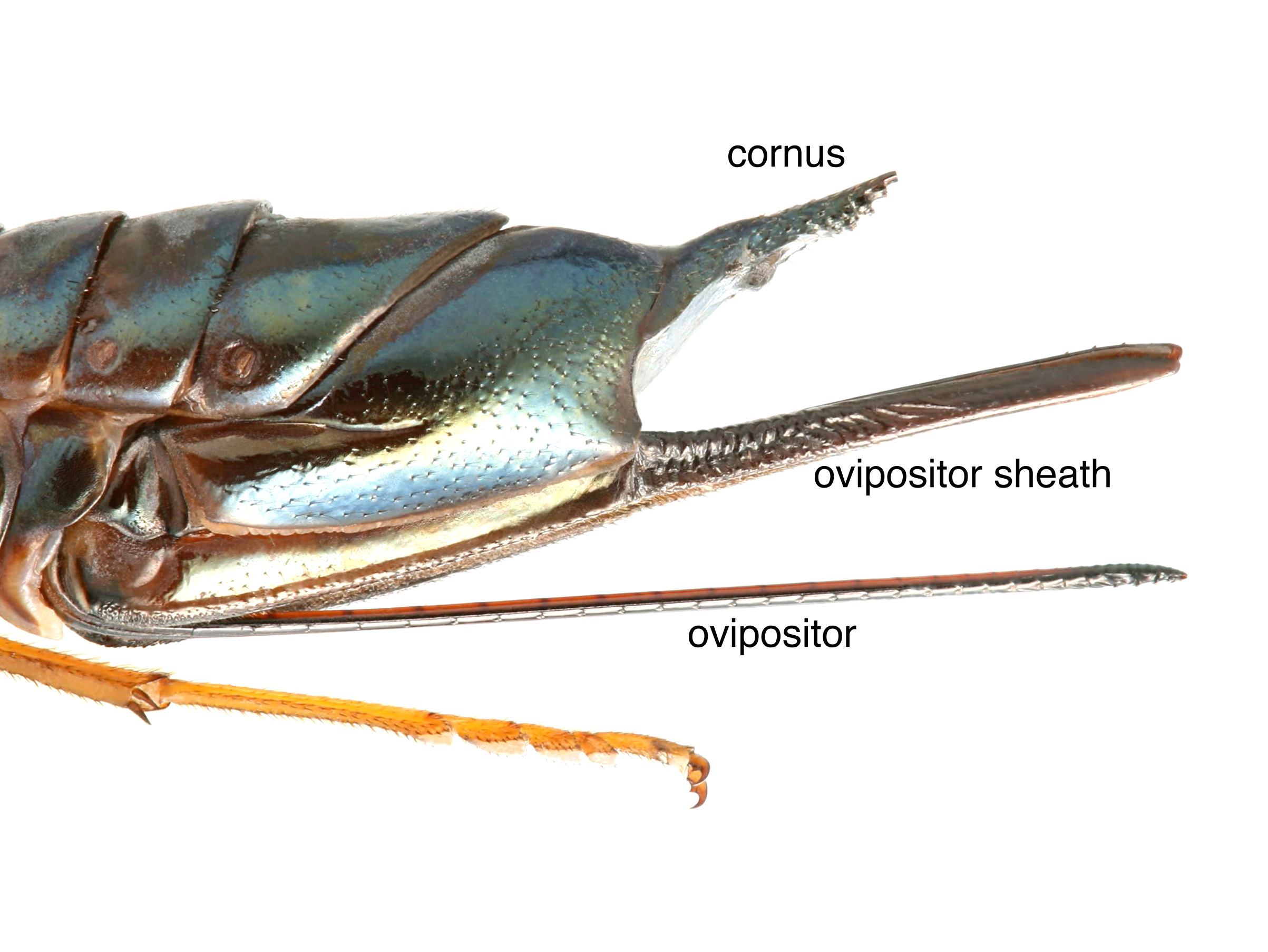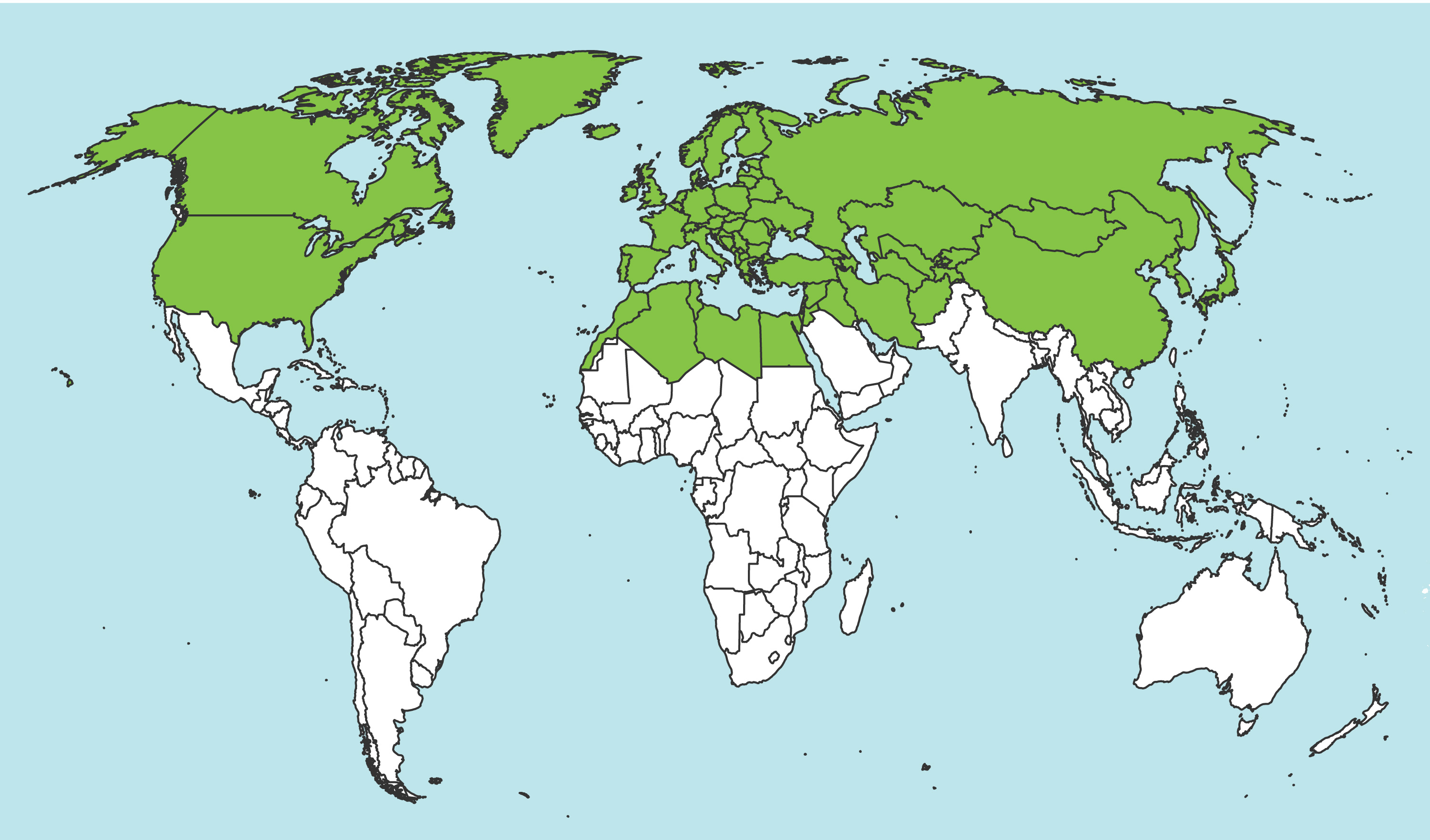Family: Argidae
Family common name: argid sawflies
Subfamily: Sterictiphorinae
Genus: Sterictiphora Billberg, 1820
Subgenera: none
Argidae are found in all non-polar regions of the world (Smith and Middlekauff 1987Smith and Middlekauff 1987:
Smith DR and Middlekauff WW. 1987. Suborder Symphyta. In: Stehr FW ed. Immature Insects. Kendall/Hunt Publishing Company. Vol. 1: 754 pp., Smith 1992Smith 1992:
Smith DR. 1992. A synopsis of the sawflies (Hymenoptera: Symphyta) of America south of the United States: Argidae. Memoirs of the American Entomological Society 39: 1-201.). They are external foliage feeders with a wide range of host plants. Additionally, the family exhibits some uncommon behaviors like the excretion of defensive compounds and subsocialsubsocial:
Living in aggregations but lacking organizational structure as in true social insects; can describes insects with tendencies to protect or care for thier young, feed gregariously, and build cocoon masses.
habits (Smith 1992Smith 1992:
Smith DR. 1992. A synopsis of the sawflies (Hymenoptera: Symphyta) of America south of the United States: Argidae. Memoirs of the American Entomological Society 39: 1-201.).
Sterictiphora are about 6–7 mm in length, and are generally black or orange and black in color. Adults are rarely observed, as they only fly in the early spring. LarvaeLarva:
the immature stage of holometabolous insects
 have a distinct feeding habit that can be easily recognized in the field (Smith 1969cSmith 1969c:
have a distinct feeding habit that can be easily recognized in the field (Smith 1969cSmith 1969c:
Smith DR. 1969c. Key to genera of Nearctic Argidae (Hymenoptera) with revisions of genera Atomacera Say and Sterictiphora Billberg. Transactions of the American Entomological Society 95: 439-457., Eiseman 2015Eiseman 2015:
Eiseman CS. 2015. On the distinctive feeding pattern of Sterictiphora Billberg (Hymenoptera: Argidae) sawfly larvae. Proceedings of the Entomological Society of Washington 117 (1): 65-67.).
There are 39 species described worldwide restricted to the Northern Hemisphere. Six are endemicendemic:
both native and unique to a particular region
to North America (Taeger et al. 2010Taeger et al. 2010:
Taeger A, Blank SM, and Liston AD. 2010. World Catalog of Symphyta (Hymenoptera). Zootaxa 2580: 1-1064.).
A key to North American species of Sterictiphora is included in Smith 1969cSmith 1969c:
Smith DR. 1969c. Key to genera of Nearctic Argidae (Hymenoptera) with revisions of genera Atomacera Say and Sterictiphora Billberg. Transactions of the American Entomological Society 95: 439-457..
 (Smith 1992Smith 1992:
(Smith 1992Smith 1992: less than width of cenchruscenchrus:
less than width of cenchruscenchrus: (Smith 1992Smith 1992:
(Smith 1992Smith 1992: fused laterally with first tergitetergite:
fused laterally with first tergitetergite: (Smith 1992Smith 1992:
(Smith 1992Smith 1992: R open at apexapex:
R open at apexapex: sheath with scopa (Smith 1969cSmith 1969c:
sheath with scopa (Smith 1969cSmith 1969c: distinctly raised (Smith 1969cSmith 1969c:
distinctly raised (Smith 1969cSmith 1969c: simple (Smith 1992Smith 1992:
simple (Smith 1992Smith 1992:The family Argidae can be distinguished from other sawflies by the single-segmented flagellumflagellum:
the third section of the antennae that includes all the segments beyond the pedicel; segments of the flagellum are known as flagellomeres
 of the antennaantenna:
of the antennaantenna:
the sensory organ emerging from the front of the head, usually between the compound eyes and above the clypeus; includes the flagellum, scape and pedicel
 . The genus Sterictiphora can be distinguished from other genera in the family by the wing venationvenation:
. The genus Sterictiphora can be distinguished from other genera in the family by the wing venationvenation:
the network of veins on a wing
, interantennal carinacarina:
a ridge or raised edge
 , and the simple tarsal claws. Males differ from related genera Arge and Atomacera because of their conspicuous forked antennaeantenna:
, and the simple tarsal claws. Males differ from related genera Arge and Atomacera because of their conspicuous forked antennaeantenna:
the sensory organ emerging from the front of the head, usually between the compound eyes and above the clypeus; includes the flagellum, scape and pedicel
 (Smith 1992Smith 1992:
(Smith 1992Smith 1992:
Smith DR. 1992. A synopsis of the sawflies (Hymenoptera: Symphyta) of America south of the United States: Argidae. Memoirs of the American Entomological Society 39: 1-201.).
none
Larvae are external leaf feeders on trees from Rosaceae, most commonly Prunus pensylvanica (fire cherry) and Prunus serotina (black cherry), but also other Prunus sp. and Amelanchier canadensis (Canadian serviceberry) (Smith 1969cSmith 1969c:
Smith DR. 1969c. Key to genera of Nearctic Argidae (Hymenoptera) with revisions of genera Atomacera Say and Sterictiphora Billberg. Transactions of the American Entomological Society 95: 439-457.).
The female deposits eggs into the margins of leaves. Upon hatching, larvaelarva:
the immature stage of holometabolous insects
 feed in a unique manner; starting at the leaf margin working towards the midrib, the larvalarva:
feed in a unique manner; starting at the leaf margin working towards the midrib, the larvalarva:
the immature stage of holometabolous insects
 chews a channel, about 8 mm in width and 10 mm in length, that winds back-and-forth in a repeating “S” pattern, much like a meandering river. The body of the larvalarva:
chews a channel, about 8 mm in width and 10 mm in length, that winds back-and-forth in a repeating “S” pattern, much like a meandering river. The body of the larvalarva:
the immature stage of holometabolous insects
 fits along the curved inside edge as it feeds. Mature larvaelarva:
fits along the curved inside edge as it feeds. Mature larvaelarva:
the immature stage of holometabolous insects
 are translucent green and measure about 13 mm in length. Prepupae burrow into the soil and construct brown, loosely woven cocoons, in which they overwinter and emerge the following spring (Eiseman 2015Eiseman 2015:
are translucent green and measure about 13 mm in length. Prepupae burrow into the soil and construct brown, loosely woven cocoons, in which they overwinter and emerge the following spring (Eiseman 2015Eiseman 2015:
Eiseman CS. 2015. On the distinctive feeding pattern of Sterictiphora Billberg (Hymenoptera: Argidae) sawfly larvae. Proceedings of the Entomological Society of Washington 117 (1): 65-67.).
World: This genus is generally HolarcticHolarctic:
describing the region of the Northern Hemisphere that includes both the Nearctic and Palearctic regions
 , and is widespread in Europe, northern Asia, northern Africa, and North America (Taeger et al. 2010Taeger et al. 2010:
, and is widespread in Europe, northern Asia, northern Africa, and North America (Taeger et al. 2010Taeger et al. 2010:
Taeger A, Blank SM, and Liston AD. 2010. World Catalog of Symphyta (Hymenoptera). Zootaxa 2580: 1-1064.).
North America: Sterictiphora generally has two distinct ranges, one west of the Rocky Mountains, and one in the mid-Atlantic north through New England and eastern Canada. There are also records of one species, S. transversa in Alaska and Alberta (Smith 1969cSmith 1969c:
Smith DR. 1969c. Key to genera of Nearctic Argidae (Hymenoptera) with revisions of genera Atomacera Say and Sterictiphora Billberg. Transactions of the American Entomological Society 95: 439-457.).
Map data from: GBIF.org (26 June 2019) GBIF Occurrence Download Sterictiphora
Details about data used for maps can be found here.